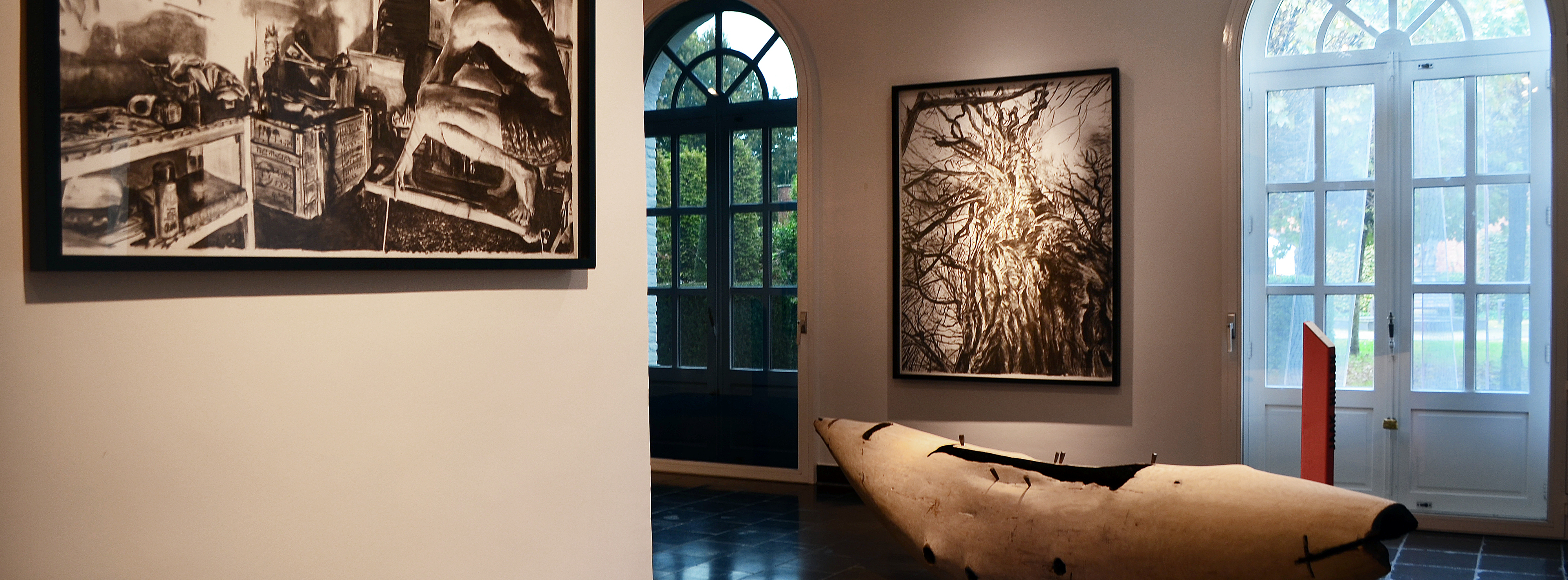Exhibitions
Lace Unravelled
Lace is fine, luxurious, delicate and traditional. Lace is marvellous.
Behind this beauty hide stories that are not always so beautiful. The brand new museum exhibition Lace Unravelled takes you into the fascinating world of Turnhout lace production. A world of lacemakers, designers, stitchers, welders, office owners, lace dealers... and (rich) customers. A craft that - from Turnhout - acquired international fame and was passed on for generations.
Follow in the footsteps of Josephina Marsboom, a young lacemaker who, like hundreds of other girls, spent long days hunched over her lace cushion in a lace school at the beginning of the 20th century. In 1911, around five thousand lacemakers worked in the Turnhout region, mostly from home and poorly paid.
How did the lace bosses determine which pieces were of the highest quality? Is there such a thing as Turnhout lace? Why were snuff, alum and gin also standard supplies for the lacemakers, in addition to pins and thread?
From a dazzling dress to lace as a symbol of social resistance: this brand new permanent exhibition sheds light on both lace production and the social history behind it. Admire unique historical pieces from the Taxandria Museum's excellent collection and be inspired by the craftsmanship of the past and the present.
'Lace Unravelled' is the result of extensive scientific research in which both experts and experienced lacemakers participated.

Former exhibitions
Jozef Schellekens
October 7th 2022 till May 14th 2023
Turnhout resident Jozef Schellekens (1909 – 1963) is regarded as an icon of modernist architecture in the Campine. For a period he was a teacher and director of the Municipal Academy, later provincial architect. Less known is that he was also a visual artist. Schellekens was inspired by various innovative art movements in the 1920s and 1930s and eagerly experimented with them. He made portraits in various techniques (with pencil, charcoal, paint), but also abstract creations and graphic art. In his modernist house (Steenweg op Mol 64-66 in Turnhout) he made several murals, one of which has survived. Family life played a major role in his art. After the death of his wife Mietje Vogels in 1942, he mainly painted and drew portraits of his children. Two of these are presented: a painting of his eldest daughter Mia (1935-1980) and a pencil drawing of his second daughter Lydia (1936-2021).
The “Friends of the Taxandria Museum” bought seven representative works by Jozef Schellekens and donated them to the museum. They can now be admired there temporarily as an introduction to his varied oeuvre. On the advice of grandson Luc Vanhout (an architect himself), the new frames got the same colour as the main colour in the works.
Passage - Campine art now
Until August 29 2022
Until August 29th 2022, thirteen contemporary Campine artists exhibit in the Taxandria Museum in Turnhout. They individually respond to the theme of one museum room and give it an original interpretation through their background, working method and choice of materials.

For a long time, the Campine has been characterized as a borderland, with poor agricultural soil and a rigid (farming) population. However, the isolation and pristine nature attracted artists to capture idyllic scenes undisturbed. In its permanent display, the Taxandria Museum offers a broad overview of this 19th- and 20th-century (painting) art.
Now, in 2021, the region has become a lot more contemporary, but fortunately the Campine soil is still a breeding ground for artistic creativity. With the temporary exhibition 'Passage', the museum offers a picture of the contemporary Campine art landscape. Variation was the key word in the selection of the artists: in age, gender, fame and technique. As a result, various art forms are passing in review: from sculpture to painting, from lace to photography, from cartoon drawing to animation.
'Passage' allows thirteen artists individually to break into one room of the museum. The creatives connect with the theme and give it an original, personal interpretation thanks to their background, working method and choice of materials. The result is an interesting dynamic, also between the different artists. The exhibition offers a special route through the entire museum. Let the artists take you into their perception, their world and their stories.

The participating artists are:
• Bob Roes, painter
• Freddy Van Dyck, draftsman, sculptor, painter
• Hanna van Dun, visual artist
• Inge Deleu, contemporary lace maker
• Jaak Hillen, sculptor
• Juan Monte, photographer
• Katrin Dekoninck, visual artist, animation
• Nest Onzea, visual artist
• Peter Snijder, light artist
• Ronny Broeckx, painter
• Stef Janssens, cartoonist
• Tom De Doncker, draftsman, tattoo artist
• Tijs van Nieuwenhuysen, visual artist
Curator: Jenny Van Gimst
The Taxandria Museum portrays the history of the Antwerp Campine and presents historical figures such as a tower keeper, an archaeologist and even… a deer! Listen to their stories and enjoy the rich (art) collection.

